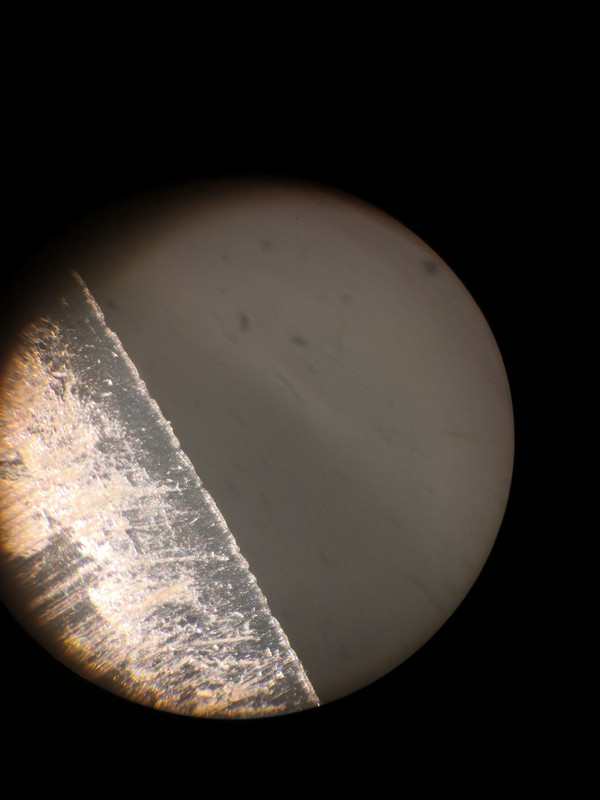- Joined
- Apr 20, 2019
- Messages
- 27
Wow, sometimes the world is very Little!Not an answer to your question, but I just noticed you are from Forli. My grandparents are from Sassoferrato (just north of Fabriano).
Buona giornata!
Marche region is full of beautifull places, Sassoferrato is one of these! I bought an anvil near Gubbio, is very very old, i think it was forged before America was discovered. Italy is full of good kinfemakers, but don't ask they something too complicate in steels or geometry... Never get an answer...this forum instead is full of good informations and people ready to answer. Buona giornata anche a te!
My old german hardness tester was calibrated by a professional 2 years ago and I sometimes check it with the certified blocks, I have 2, one at 63. 5 hrc and one at 45. The error is + -1 obviously ... But not 5, absolutely. the surface of the tang is not cleaned well in the picture, but anyway I repeated the measurement after cleaning and the measured hardness is always the same. I am sure of thisI would be a little worried with the accuracy of you hardness tester. Those numbers are a bit high for just about any alloy. If I had to guess I would say your sitting around 5hrc lower then what your tester is showing. Even in the best situations with testers and standard test blocks your going to be sitting around +-1rc. We use tighter tolerance calibration blocks that are +-.5rc but thy are quite pricy. We just had to buy another one as we had completely used up the last one. We surface ground it down to a fresh surface but in all honesty it’s now at best a ballpark test block. It seams to measure the same as it did but nothing we would calibrate with.
You can get higher accuracy in hardness testing but generally requires a different tester and a much more strict surface condition. I think the industry’s standard is a tukon microhardness tester. It uses a 4 sided pointed diamond. You then use a microscope and measure the dimensions of the impression. This is way overkill for knives and would take way to long. Plus in all honesty you will not notice much if any difference between say a 60 and 61rc blade. But you sure as hell will if a blade is 55rc and your thinking it’s 60rc. So I circle back around to saying you should take a look at your tester and calibrate it have it calibrated.
Agree, because if you want to cut easily cardboard, you need a thin blade, thinh blade is brittle and chip easly if not made with adeguate tough material.Hardness is not everything when it comes to edge holding. People have tried to make tungsten carbide blades and does not work out so well. It’s so brittle that you can’t really put an appropriate edge bevel and angle and n it. Think of the ceramic kitchen knives, yeah thy are great till there not then thy suck way more.
I can hardly believe it ... But im full of old saws, I will try this crazy Way!aOnce upon a time I had a cardboard deluge to deal with after a move.
I started out with a utility/razor knife.
THAT FRICKING SUCT!
Then I tried a longer knife which worked a lot better but still required considerable PHYSICAL efforts.
My wife happened upon me in the midst of my unceasing labors, took one look, walked off and came back with a cheap, beat to crap woodsaw (crosscut as if that factoid is important) from my discard box in the workshop. I've been using it ever since and it goes thru cardboard like a cat goes thru fancy feast. I've never cut myself with that saw nor has it been maintained in any way. Been going for years.
Just sayin......
Corey









